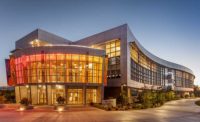Innovation is a noble objective. But at the end of the day, the planning and execution of the pre-determined goal—whether it is designing a new building, manufacturing a better product, or developing a solution for any problem—falls on the shoulders of a few hardy soldiers who have to find the answer. An idea is a starting point. The real work, however, is taking the idea from concept to completion.
Such is the case in the mandate for improved energy efficiency. Politicians, business executives, activists and administrators who clamor for improvement can do so without understanding, investigating or even having direct knowledge of the problem. Any person can say they want to significantly improve energy usage. Anyone can say they want to land on Mars, too. Just because a person specifies a goal does not mean it will happen. The roll-up-the-sleeves work is done away from the press conferences and swanky boardrooms.
In the current hot-button issue to dramatically reduce energy consumption, protect the environment, and other earth-saving objectives, the task for achieving those goals through construction requires the expertise of architects. They need to design structures that match the needs of their client—some wish lists look as long as the holiday requests of a typical 8-year-old—while also factoring building codes, costs, footprint, environment and many other details. Adding demands on energy goals creates an additional challenge, especially when deciding on cladding, glass and other materials for the façade.
“The first step in designing any building is to find out what the goals are,” says Daniel Overbey, AIA, Director of Sustainability, Associate, for Browning Day in Indianapolis. “What are we trying to accomplish with the façade? Then we have to talk about the definition of high performance. We will want to be better than the standard. But what is the standard? If we aim for a much higher percentage than the standard, what is the return on the investment?”
There have been fits and starts in the demand and design of energy-saving buildings. The idea gained steam in the late 1980s, petered out, became rejuvenated and fizzled once again. Now, however, there is a renewed commitment, perhaps more energized than ever before.
Architects have benefitted over the past decade from the evolution of tools that help determine energy usage. With the advancement of technology, architects can now basically build the model on a computer screen and get accurate energy computations. When the building is completed and in use, further technology advancements can relay even more information about energy usage. Amid the climate that focuses on reducing energy requirements, those tools are especially critical.
Worldwide Trend
The undeniable trend is toward constructing buildings that are more energy-efficient. In India, for instance, 40 percent of the population is expected to live in cities by 2030. More than 60 percent of the roofs are made of concrete, metal, and asbestos, which can trap heat.
“Further, buildings account for more than 30 percent of India’s electricity consumption and a significant share of annual carbon dioxide emissions,” Arvind Kumar and Rajkiran V. Biloikar wrote in The Indian Express. “It is thus imperative that any effort towards energy conservation must include a focused approach to urban areas and more specifically on buildings and built-up areas.”
The United Nations Environment Programme International Resource Panel issued a report earlier this year that said emission from the material cycle of residential buildings in G7 countries and China could be reduced by at least 80 percent in 2050 through a series of material efficiency strategies.
The Panel’s modeling unit said greenhouse emissions could be reduced by 350 million tonnes in China, 270 million tonnes in India and 170 million tones in G7 countries between 2016 and 2060 by designing with alternative materials.
Changes in building construction and envelope performance are definitely coming. In September, the U.S. House took up debate on a Clean Energy Package that included more than 150 amendments, including one that would require the federal government to use entirely renewable energy by 2050.
Starting at the Envelope
One of the earliest, and most vexing, challenges for architects is the design of the building envelope. “The highest performance envelope is one without windows,” Overbey says. “Generally, glazing systems are the weakest links for energy efficiency—but what would a window-less building be like for users? Architects cannot overlook the human element of buildings for the sake of performance.”
Buildings without windows are extremely rare. In the earliest design stages, there is often debate about how much glass to include on a particular project. “It’s the tension of the two sides,” says Overbey. “You have to balance the human experience with the energy equation. The most well-insulated envelope is one that is basically a cocoon. It’s important to find that sweet spot where you can specify a glass with a treatment that will also reduce the amount of heat transfer.”
One method to improve the energy efficiency of the building envelope is through channel glass. At Franklin & Marshall College in Pennsylvania, for instance, Steven Holl Architects used a double layer of Bendheim’s channel glass with translucent insulation.
Channel glass is preferred by some architects as it requires minimal framing, which reduces thermal bridging. In steel buildings, thermal bridging occurs when conductive materials provide a bridge for energy to transfer across a thermal barrier. The bridge leads to energy loss and the potential for condensation. In colder climates, internal heat will seek to transfer to the colder side of the envelope, resulting in more energy needed to maintain room temperature. In warmer climates, exterior heat will seek to enter the envelope. Up to 33 percent of a building’s energy could be lost through thermal bridges.
Channel glass also adds insulation with its double glaze assembly and insulation inserts inside the channels. Channel glass adds daylighting, which also reduces energy demand.
Another method to help reduce energy dependency is through the use of rainscreens. A rainscreen system’s primary objective is to protect the envelope and deter rainwater from falling into a building’s exterior wall. They are also effective, however, in managing air infiltration and heat transfer.
The rainscreen promotes energy savings due to the air cavity on the exterior façade of the building, allowing for continuous ventilation. The enhanced ventilation improves the durability of the cladding material, as it remains dry. It also prevents heat buildup behind the cladding, making cooling the builder easier in summer months.
Inova Schar Cancer Institute in Fairfax, Virginia became only the first project in the United States to use Bendheim’s vertically-and-horizontally shingled glass rainscreen system when it was installed last year. The rainscreen has an aesthetic and lighting role, but the shingled glass system also acts as a permanent moisture shield. The cladding’s continuous horizontal steel substructure sits atop a layer of rigid insulation, and has the ability to stop more than 90 percent of wind-driven rain from reaching the air and vapor barrier of the building.
Designing an energy-efficient building envelope requires extreme integration that accounts for sun positioning, building materials, climate and the quality of construction.
“An integrative, holistic approach is the best way to make sure the building is designed for maximum energy efficiency,’’ Overbey said. “When you look at everything, even the massing, we can get a sense of how it’s going to be.”
Keeping Track
The final step that many architectural firms now employ is the installation of dashboards that track energy use. Dashboards monitor water usage, light loads, air quality, energy per square-foot, and more.
The University of California Davis pledged in 2013 to reduce its net greenhouse glass emissions for its physical plant and vehicle fleet to zero by 2025. The university monitors data that records 200,000 data points that show how efficiently energy is being consumed. The details will help UC-Davis make strategic decisions for new energy systems and future purchasing decisions.
Like any innovation, the conversation, products, and challenges are fluid. The issues that face architects in 2020 are different than the challenges they faced a decade ago, and ones they will face 10 years hence.
The demand, however, is clear. The pillaging of the Earth’s natural resources has led to the development of an angry planet and an international groundswell for change. There are a lot of frontline soldiers, including many forward-thinking architects who are establishing groundbreaking steps in building design.
“We’ve become aware just how much global warming and greenhouse emissions come from the building sector,” Overbey says. “It’s a huge piece of the pie, and if we can do something about it, now is the time. Dollar for dollar, the best place to invest is in the architecture. We now have the tools that can see in real time the relative difference in performance.”





